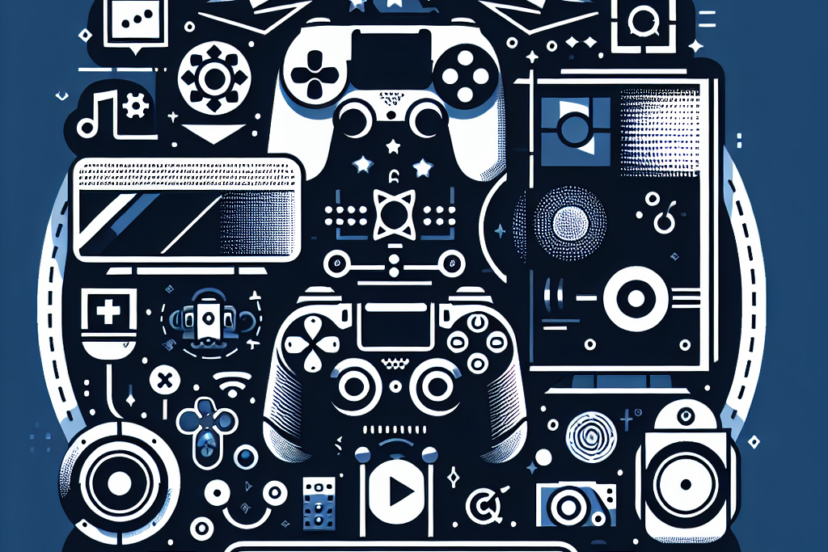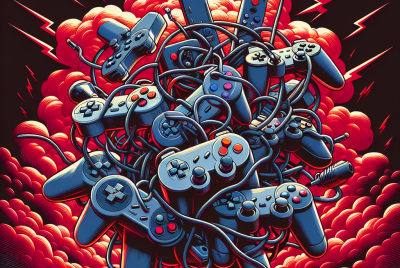The Ultimate Guide to Gaming Monitors for Esports
Understanding Gaming Monitors
What is a Gaming Monitor?
Gaming monitors are specifically designed displays that enhance the gaming experience by offering features that improve visual performance, responsiveness, and clarity. Unlike standard monitors, gaming monitors prioritize attributes like refresh rate, response time, and adaptive sync technologies to deliver a competitive edge in fast-paced games.
Key Features of Gaming Monitors
Refresh Rate
The refresh rate, measured in Hertz (Hz), refers to how many times per second a monitor refreshes the image on the screen. For esports, high refresh rates are crucial since they provide smoother visuals. A monitor with a refresh rate of 144Hz or higher is recommended for competitive gaming, as it can display up to 144 frames per second, reducing motion blur and allowing for quicker reactions.
Response Time
Response time indicates how quickly a pixel can change from one color to another, measured in milliseconds (ms). A lower response time minimizes ghosting and blurring during fast movements, which is particularly important in fast-paced esports titles. Monitors with a response time of 1ms to 5ms are ideal for competitive gaming, ensuring that actions appear crisp and clear.
Adaptive Sync Technologies
Adaptive Sync technologies, such as NVIDIA’s G-Sync and AMD’s FreeSync, synchronize the monitor’s refresh rate with the graphics card’s frame rate. This minimizes screen tearing and stuttering, providing a smoother gaming experience. If you're invested in a high-performance gaming system, look for monitors that support these technologies.
Choosing the Right Gaming Monitor for Esports
Screen Size and Resolution
Screen Size
Choosing the right screen size is subjective and often depends on personal preference and gaming setup. Common sizes range from 24 inches to 32 inches for gaming monitors. While smaller sizes can provide a tighter focus on gameplay, larger screens may enhance immersion. A recommended screen size for esports is between 24 to 27 inches, as it offers a good balance between field of view and pixel density.
Resolution
Resolution impacts the clarity and detail of the images displayed on the monitor. For esports, 1080p (Full HD) is the most common resolution, as it allows for higher frame rates without requiring the most powerful graphics hardware. Some gamers may prefer 1440p (QHD) for a sharper image, but it’s important to ensure that your system can handle the increased graphical demand.
Panel Types
In-Plane Switching (IPS)
IPS panels are known for their excellent color accuracy and wider viewing angles. They are great for gamers who also enjoy multimedia content, but they generally come with slower response times compared to other panel types. If color reproduction is a priority alongside competitive gaming, an IPS monitor can be a fantastic choice.
Twisted Nematic (TN)
TN panels are often favored by competitive gamers due to their fast response times and higher refresh rates. They are generally more affordable but come with lower color accuracy and narrower viewing angles. If the primary goal is performance over visual fidelity, TN monitors may be the way to go.
Vertical Alignment (VA)
VA panels strike a balance between IPS and TN panels, offering better contrast and deeper blacks. They have slower response times compared to TN panels but can still perform adequately for gaming. VAs are ideal for gamers looking for a mix of good color performance and responsiveness.
Additional Features to Consider
Ergonomic Design
Comfort is vital, especially during long gaming sessions. Look for monitors that offer height adjustment, swivel, and tilt features. Ergonomic designs can help you find the most comfortable viewing angles, reducing strain on your neck and eyes.
Color Accuracy and Coverage
For gamers who play visually stunning titles, color accuracy can enhance the overall experience. Look for models that offer wide color gamut coverage. Monitors with 99% sRGB or AdobeRGB ratings ensure that colors appear vibrant and lifelike.
Connectivity Options
Having adequate connectivity options is essential for esports setups. Look for monitors with multiple HDMI ports, DisplayPorts, and USB hubs to facilitate easy connections to other devices. Some gamers may also benefit from built-in speakers or audio jacks.
Setting Up Your Gaming Monitor
Calibration for Optimal Performance
Brightness and Contrast
Setting the right brightness and contrast can significantly improve visibility in darker games. Adjust your monitor's brightness to around 80% and contrast to around 50% to begin with. Fine-tuning these settings based on personal preference and room lighting conditions will offer a more comfortable viewing experience.
Color Settings
Most gaming monitors come with preset modes for various uses – gaming, cinema, or standard. For competitive play, you may want to switch to the gaming mode, which often adjusts parameters to reduce input lag and enhance response times. If available, consider tweaking color settings based on the specific game you are playing.
Optimizing Refresh Rate
Ensure you’re taking full advantage of your monitor’s refresh rate. Check your graphics card control panel settings and set the refresh rate to match your monitor's maximum. This step is crucial for competitive gaming, as it ensures that the monitor is working seamlessly with your graphics output.
Top Gaming Monitor Brands for Esports
ASUS
ASUS is well-known for its ROG (Republic of Gamers) lineup, which includes monitors designed specifically for esports. Features like high refresh rates, low response times, and G-Sync compatibility make ASUS monitors a popular choice among competitive gamers.
Alienware
Alienware monitors are known for their sleek designs and high performance. Their offerings often feature IPS panels with impressive refresh rates, ensuring vibrant visuals and a competitive edge in gameplay.
Acer
Acer’s Predator series provides top-tier gaming monitors that combine high refresh rates with exceptional response times. With various choices in screen size and technology, Acer caters to many gaming preferences.
BenQ
BenQ is renowned for its Zowie line, which targets competitive gamers. Zowie monitors prioritize performance with low input lag and affordable pricing, making them a solid option for both amateur and pro players.
Maintaining Your Gaming Monitor
Cleaning Your Monitor
Keeping your monitor clean is essential to maintain optimal performance and appearance. Use a microfiber cloth to gently wipe the screen and avoid using glass cleaners, which can damage the screen’s coating. For stubborn smudges, lightly dampen the cloth with water or a mixture of water and vinegar.
Updating Firmware and Drivers
Manufacturers often release firmware updates to fix bugs and improve performance. Check the manufacturer's website periodically for any available updates. Moreover, keep your graphics card drivers updated to ensure compatibility and optimal performance with the latest games.
Calibration Software
Using third-party calibration software can be beneficial to ensure your monitor is performing at its best. Tools like DisplayCAL can help you achieve accurate colors and optimal settings for gaming.
Conclusion: Finding Your Perfect Gaming Monitor
When it comes to selecting the perfect gaming monitor for esports, remember that preferences may vary among individuals. Balancing personal preferences, budget, system compatibility, and specific gaming genres will ultimately guide you to an ideal choice that enhances your competitive gaming experience. Investing time in research and adjustments will ensure you get the most out of your gaming setup.




